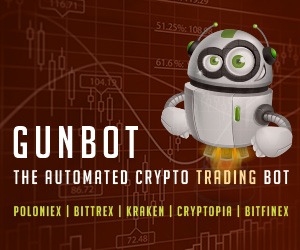Growth = informational entropy = more time, lower time preference.
The above equation helps us visualize a framework for such a dynamic and demonstrates how bitcoin, as a base layer with a zero monetary entropy, can help propel us into this future.
Money does not = value.
Instead, it is a measure of value created in an economy. Good money, therefore, is information. It informs us of our progress. Bad money blinds us, causing us to veer off onto spindly and corroded dirt roads.
Inflation does not = the Consumer Price Index (CPI).
Inflation is not the cost of gas prices. It is not lumber prices going up. It is not the price of a Big Mac or your electricity bill. It is not even your house’s value appreciating.
The most encompassing definition for inflation is more fundamentally the depreciation of money versus the value otherwise created.
Inflationary monetary systems obfuscate the value created by societal productivity. This simple statement can not be overstated. Since the early decades of the 20th century, we have errantly accepted inflation as a first principle necessity in all free markets. But it is not the natural economic state, and in a broader historical context, it is actually a fairly recent experiment (see Gibson’s Paradox ). Quite the opposite is true in terms of the natural state of human progress and free market capitalism. Once this problem is truly appreciated, the value of an absolute scarcity that is verifiable, immutable and censorship resilient across time and space, as well as stateless (belonging to the free market), we suddenly realize just how incredible an invention this truly is. That is the rabbit hole that is bitcoin. The notion is subtle, but once understood, the gravitational desire to dive headfirst down this rabbit hole of myriad societal revolutions becomes an inescapable journey.
“You never change things by fighting the existing reality. To change something, build a new model that makes the existing model obsolete.” — Buckminster Fuller
Bitcoin = A Mirror
A deflationary monetary system of absolute hard money acts as a mirror for value creation. It is a compass to guide us toward a better economic path. Value is created through human ingenuity, environmental necessity and the compounding productivity driven by our accumulation of collective knowledge. These forces are often labeled generically as technology or innovation, and they always create value decreasing informational entropy. Said differently, all productivity is driven by technology and all technological innovation is deflationary at a fundamental level. That is, as long as money remains a constant in the equation.
If, however, money is inflating, we lose our measure of value. It would be like using the proverbial yardstick that constantly redefines what a yard is: A table is two yards; but then a yardstick creates more units and suddenly that table is four yards. The table did not grow. The measurement unit shrank. A store of value is just as it sounds. It stores all the productivity and work created. If more value is created than a sound money, then that money by definition has more purchasing power and stores greater and greater value. If instead value is being destroyed by money supply abuse, then people will without fail seek to store their value elsewhere. Money must always, therefore, start as a store of value before it becomes a medium of exchange. Deflation is a measure of success in creating economic value as innovation creates more for less. If prices decrease by 5% per year, that is a much greater expression of value creation than our current measures that are perversely inverted, such as “real GDP.” If you print dollars and then count the value created in those very dollars, what does that actually tell you? What if you could instead calculate the amount of goods and services created versus the dollars created. Would that not tell us more?
Conclusion
We live in a time of incredible technological advancements on increasingly exponential growth curves. This is taking information production to an unseen scale of abundance, but such abundance is diluted and often fully negated by fiat’s perversion of money’s potential to synergistically accommodate such plentitude.
If technological productivity has the potential to decrease informational entropy output for each thermodynamic unit of increased entropy input, this is the true definition of wealth creation and prosperity. More for less. Fiat not only robs us of this wealth, but it adds to the entropic dissipation polluting our ecosystem and making it ever more fragile. Yes, “ecosystem.” A word most often associated with environmental dialogues is not coincidentally built from the word “economy” itself (with its etymological roots in the Greek words for “distribution of the home ”), as thermodynamic systems are inextricably linked to systems of human productivity (information).
Concluding with the trite axiom, “bitcoin fixes this,” does not even begin to do the solution that is bitcoin the justice it deserves. Bitcoin addresses this problem like Cinderella’s slipper. It is a perfect fit or a perfect solution in this case. Not only does the Bitcoin network inherently take highly disordered information and asymmetrically (through cryptography) make this information incredibly ordered, as eloquently stated by Bitcoiner Gigi in his article Bitcoin’s Eternal Struggle , but bitcoin (the money) with its properties of absolute scarcity, decentralized consensus, immutably programmed supply, rule-based and anti-fragile incentive structure, changes the game entirely. Each of these properties on their own would change the game, as they’re each intensely conducive to decreased informational entropy, especially when compared to fiat. But when combined, the synergistic reduction in entropy is perhaps even more exponential than the Cambrian explosion of information that is being produced by today’s technological abundance.
It will be a great day, perhaps a great filter of sorts, when the ships of money and other technology can sail along the same current.
This is a guest post by Aaron Segal. Opinions expressed are entirely their own and do not necessarily reflect those of BTC, Inc. or Bitcoin Magazine.





